Key takeaways
- YouTube can supplement children’s education effectively, but parental guidance is essential to ensure content is appropriate and engaging.
- Choosing educational channels with credible backgrounds and aligning them with children’s interests improves learning outcomes and fosters curiosity.
- Setting safe viewing practices, like using Restricted Mode and creating curated playlists, enhances the educational experience while protecting children from inappropriate content.
- Balancing screen time with offline activities and interactive discussions transforms passive viewing into meaningful learning experiences.
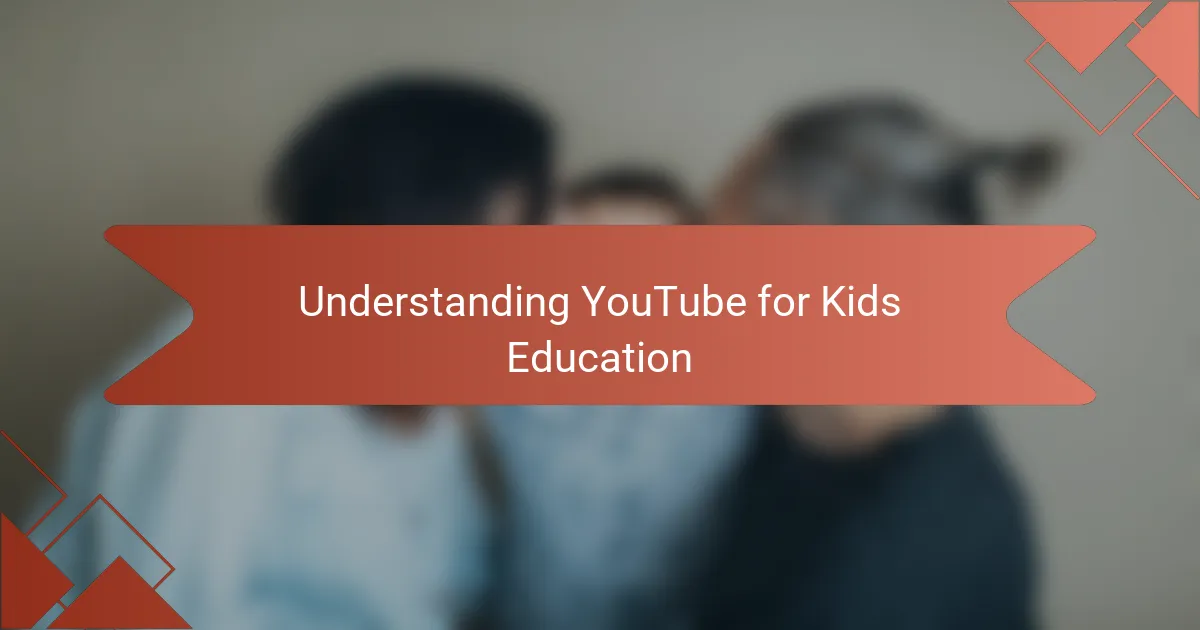
Understanding YouTube for Kids Education
YouTube has become a go-to platform for many parents looking to supplement their children’s learning. From my experience, it offers a vast range of educational content, making complex subjects like science or history not only accessible but also entertaining for kids. Have you ever noticed how a well-made video can capture a child’s attention in a way a textbook never could?
However, understanding that not all content is created equal is crucial. I’ve often found myself scrolling through countless videos to find those that are age-appropriate and genuinely educational, rather than just distracting. This makes me wonder: how can parents ensure they’re choosing the right channels that truly benefit their children’s development?
At the heart of using YouTube for kids’ education is balance and guidance. While the platform offers incredible learning opportunities, it requires active involvement from parents to create a positive experience. Reflecting on my own journey, setting time limits and watching videos together has made all the difference in turning screen time into meaningful learning moments.
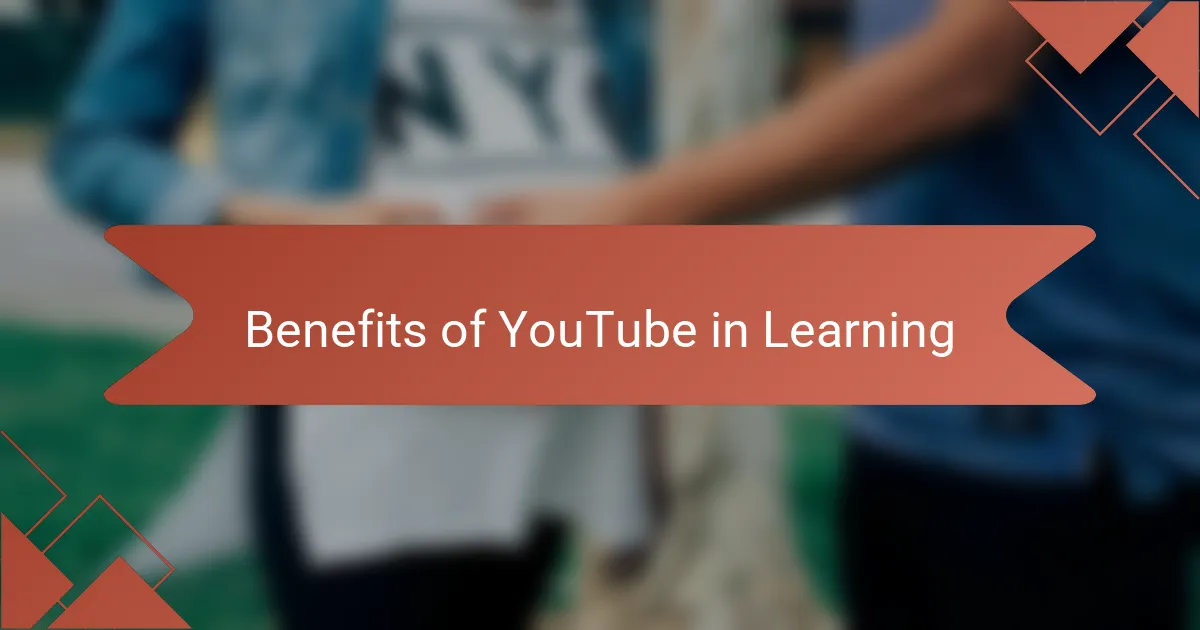
Benefits of YouTube in Learning
One of the biggest benefits I’ve noticed with YouTube is how visually rich learning becomes. Kids who might struggle with reading can suddenly grasp tricky concepts when they see animations or experiments in action. Doesn’t it feel rewarding to watch your child’s eyes light up when something clicks because they saw it, not just read about it?
Another aspect I appreciate is the diversity of content available. Whether your child is into dinosaurs, space, or music, there’s something tailored to their interests. I’ve seen this firsthand: when my daughter found a channel about wildlife, her curiosity grew beyond my expectations—it felt like a gateway to exploring the world from our living room.
Lastly, YouTube allows for learning at your own pace, which I believe is incredibly empowering. Kids can pause, rewind, or watch a favorite video multiple times until they fully understand a topic. Have you experienced that little moment of joy when your child confidently explains something they learned on their own terms? That’s the kind of self-driven learning I think YouTube can really nurture.
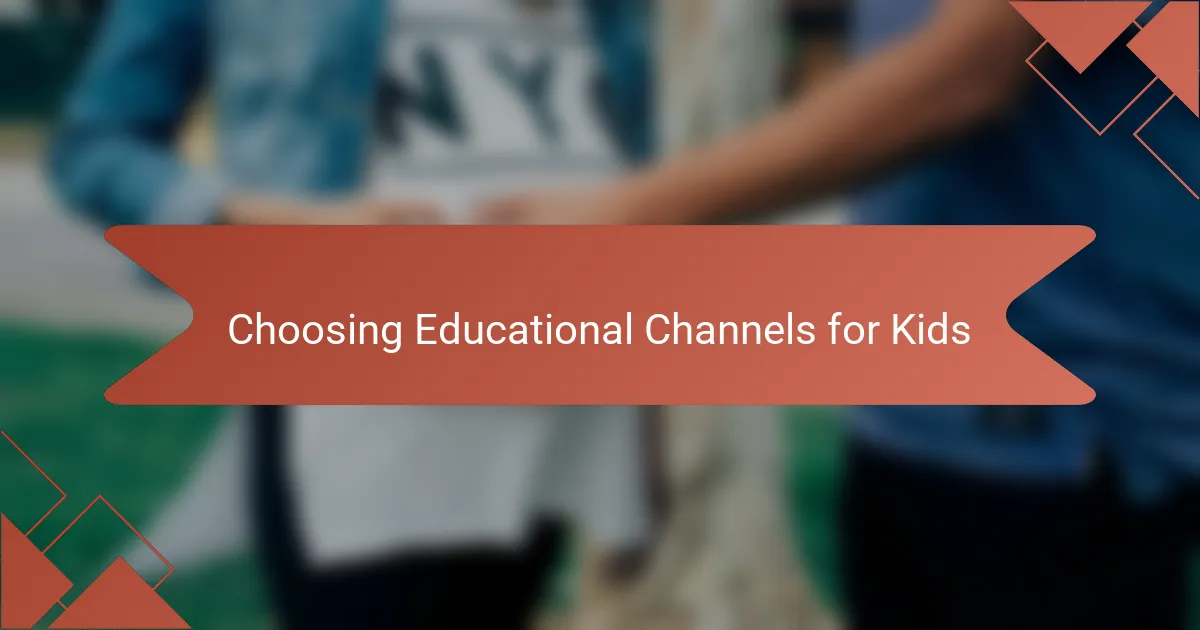
Choosing Educational Channels for Kids
Choosing educational channels is where the real challenge begins. I’ve learned that not all channels labeled “educational” truly offer content that’s both accurate and engaging for kids. Have you ever clicked on a video that promised learning but ended up feeling like fluff? That’s why I spend time previewing channels, making sure the information is trustworthy and presented in a fun, age-appropriate way.
One strategy that has worked well for me is looking for channels with clear credentials or ones created by educators. When I discovered a channel run by a science teacher who explains concepts using everyday objects, it instantly became a favorite in our household. These types of channels make learning tangible and relatable, which keeps my kids curious and motivated to explore more.
It’s also important to pay attention to how the content aligns with your child’s interests and learning style. My son, for instance, loves stories, so I gravitate towards channels that incorporate storytelling into their lessons. Does it make a difference? Absolutely. When the material resonates on a personal level, the learning sticks and the joy of discovery shines through every video.
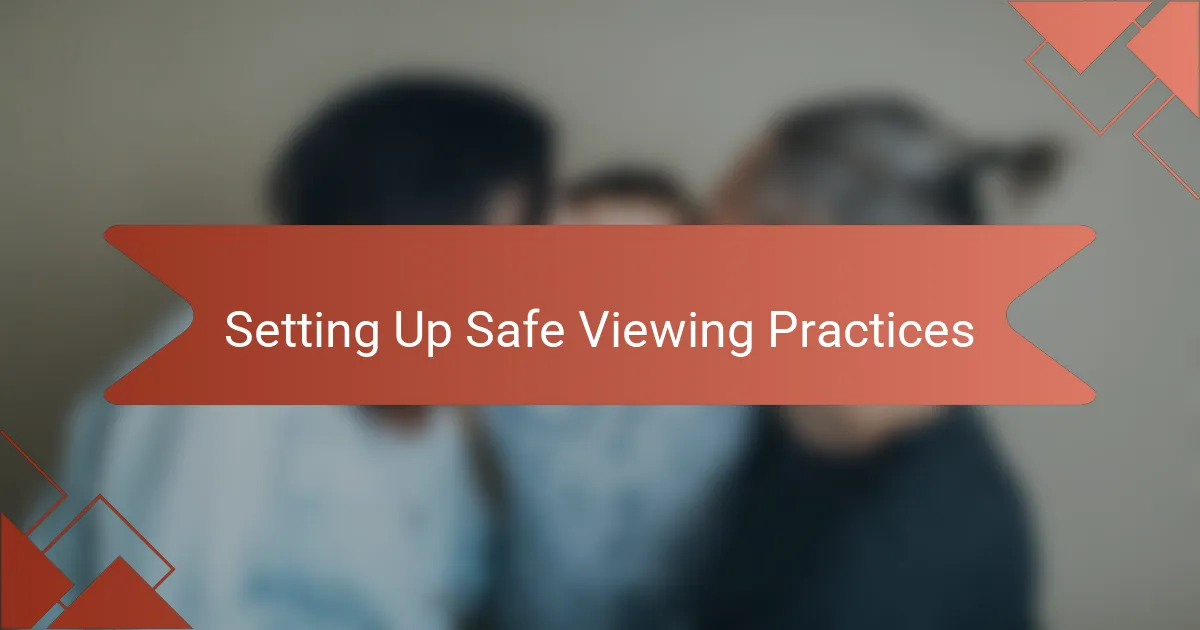
Setting Up Safe Viewing Practices
When setting up safe viewing practices on YouTube for my kids, I always start by activating the platform’s “Restricted Mode.” It’s a simple step, but it filters out a lot of inappropriate content, giving me some peace of mind while my children explore educational videos. Have you ever felt that slight worry when your child clicks on a video thumbnail? This setting helps me keep that unease at bay.
I also make it a point to create playlists of pre-approved videos. This way, my kids can watch continuously without stumbling onto unrelated or unsafe content. It’s like creating a little curated classroom just for them right on the screen—a practice that not only protects but also guides their learning journey in a meaningful way.
Lastly, I’ve found that watching videos together is irreplaceable. Sitting down with my child offers more than just supervision; it opens the door to discussions about what they’re seeing and learning. Isn’t it powerful when those moments turn into questions, reflections, or even shared excitement? This interactive approach makes me feel confident we’re making the digital learning experience both safe and enriching.
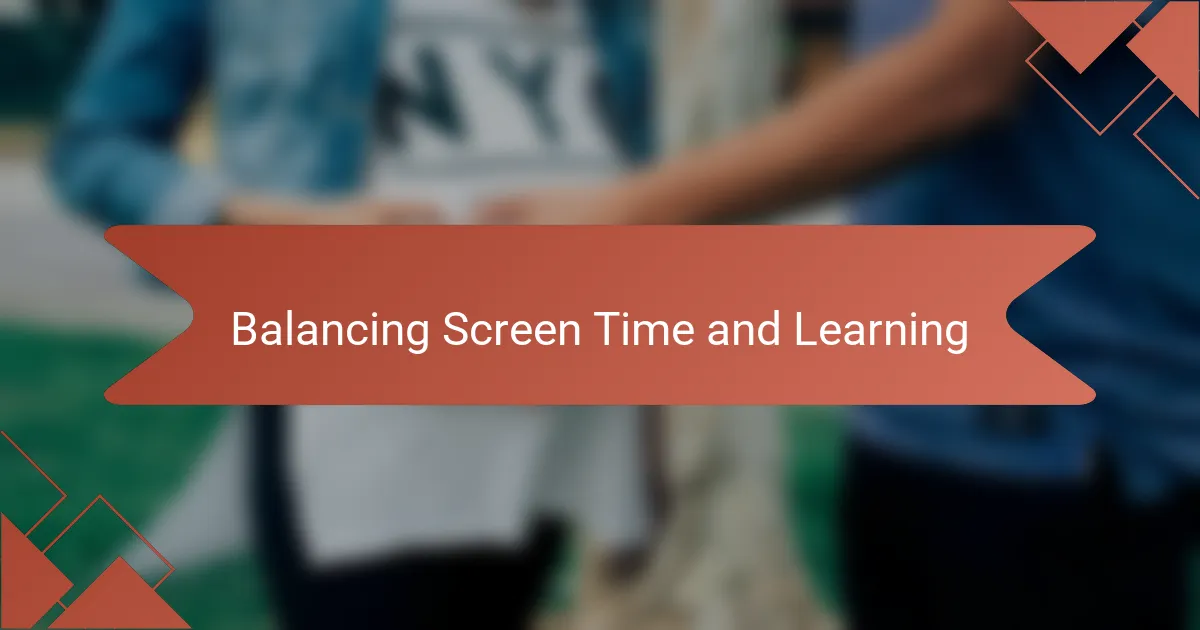
Balancing Screen Time and Learning
Finding the right balance between screen time and learning has been a bit of a juggling act for me. I’ve noticed that when my kids spend too long in front of the screen, even if it’s educational content, they start to zone out or lose focus. How do you keep them engaged without letting the screen dominate their day? For me, setting clear time limits and mixing in offline activities helps maintain that healthy rhythm.
Sometimes, I ask myself if my kids are truly absorbing information or just passively watching. That’s why I pair screen time with active engagement—like discussing the video afterward or trying out a related hands-on project. This way, screen time transforms from a passive experience into something interactive and meaningful.
It’s also important to remember that quality beats quantity. Rather than endless watching, I prioritize short, well-curated videos that spark curiosity without overwhelming. Have you noticed how a carefully chosen five-minute lesson can have more impact than an hour of random clips? I certainly have, and it’s made all the difference in keeping learning both fun and balanced.
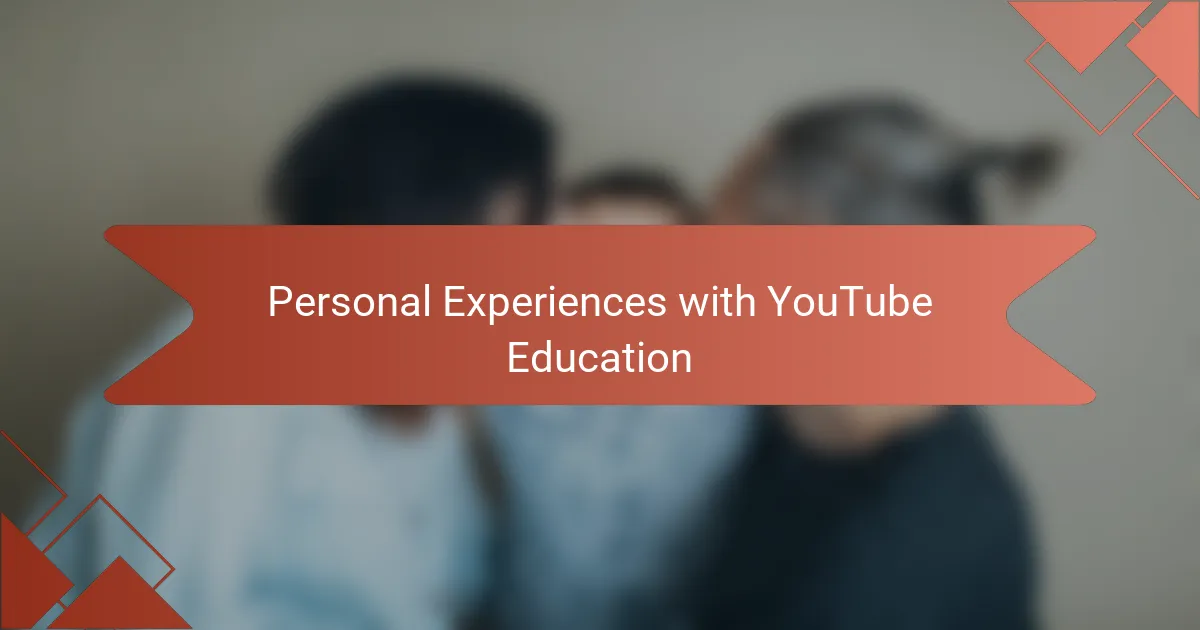
Personal Experiences with YouTube Education
When my son first started exploring science channels on YouTube, I was pleasantly surprised by how quickly he absorbed new ideas. It wasn’t just passive watching; he’d excitedly explain concepts like photosynthesis or gravity during dinner, which made me realize how powerful a well-crafted video can be in sparking genuine interest. Have you ever witnessed your child suddenly become a little expert on a topic out of nowhere? That moment always feels special to me.
At times, I’ve noticed the challenges too. There were days when my daughter would get distracted by flashy thumbnails or catchy music that weren’t actually educational. I learned that it takes patience and sometimes guiding her back on track to ensure the content really adds value. It made me reflect on how important my involvement is—YouTube can be a great resource, but it works best when we use it thoughtfully together.
One standout experience was finding a channel that combines storytelling with lessons about history. My son, who loves stories, was hooked immediately, and it turned screen time into a bonding experience as we discussed the characters and events afterward. It’s moments like these that convince me education on YouTube isn’t just about information, but about creating shared memories and curiosity. Have you felt that same connection during your child’s learning journey?
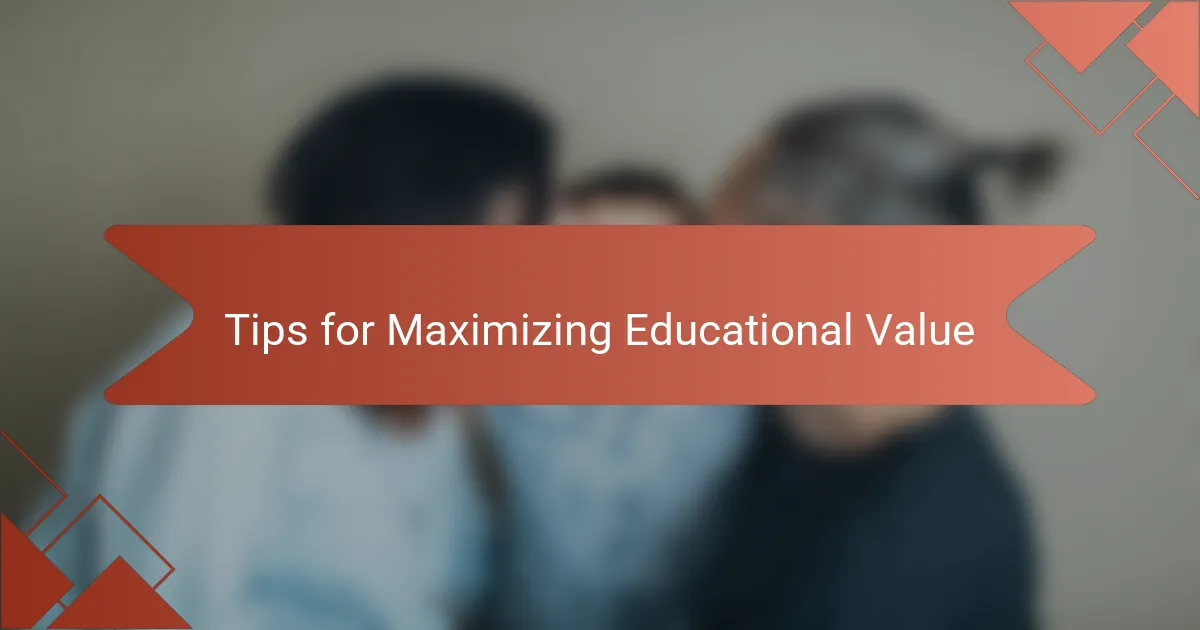
Tips for Maximizing Educational Value
To get the most educational bang for your buck on YouTube, I’ve found that setting clear goals before watching really helps. Instead of letting kids browse aimlessly, picking videos around a specific topic or skill makes their learning feel focused and purposeful. Have you tried this approach? It transforms random screen time into a targeted adventure of discovery.
Creating a viewing routine with your child has worked wonders in my household. We usually watch a video together, then pause to chat or relate what they’ve learned to real life. These small moments of interaction deepen the understanding far beyond the screen, and honestly, it’s when I feel the learning really sticks for them.
Lastly, I can’t stress enough the importance of mixing YouTube lessons with hands-on activities. After watching a science experiment, for example, we recreate it with household items—it’s amazing how much more meaningful the concepts become through doing, not just watching. Doesn’t learning feel more alive when kids get to experiment and explore on their own? This blend of media and active play is something I always recommend to keep education vibrant and memorable.